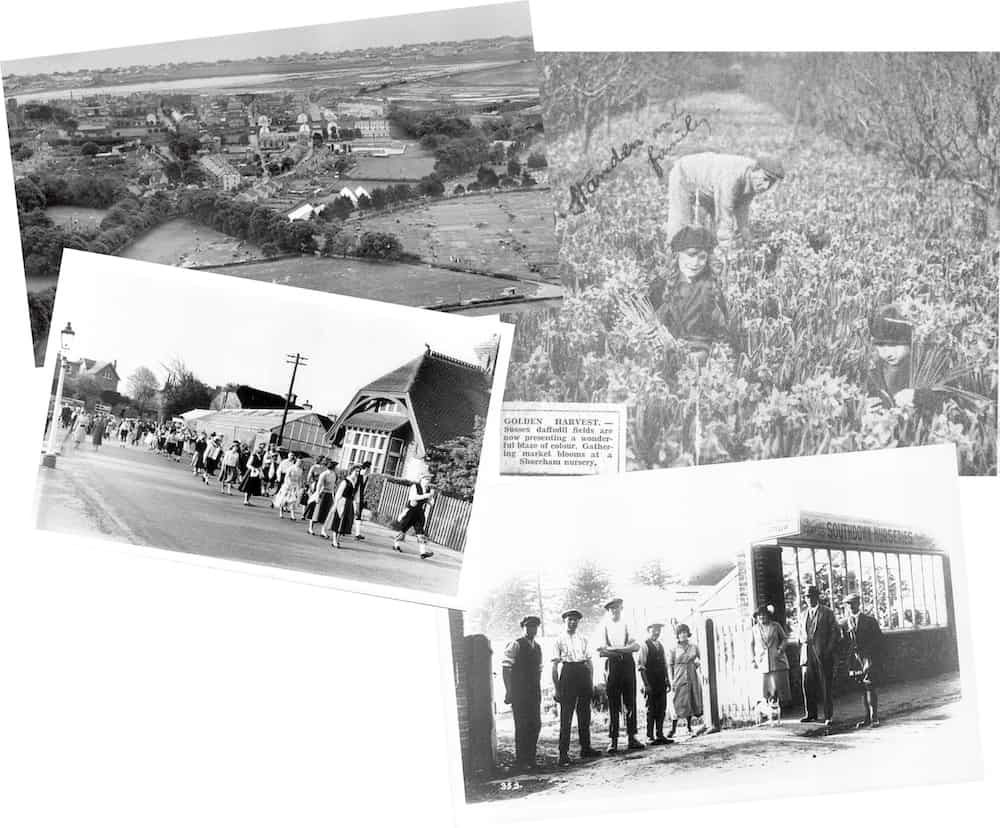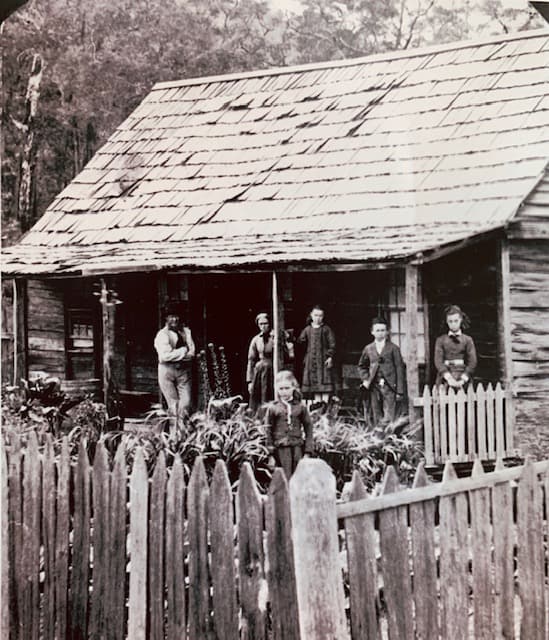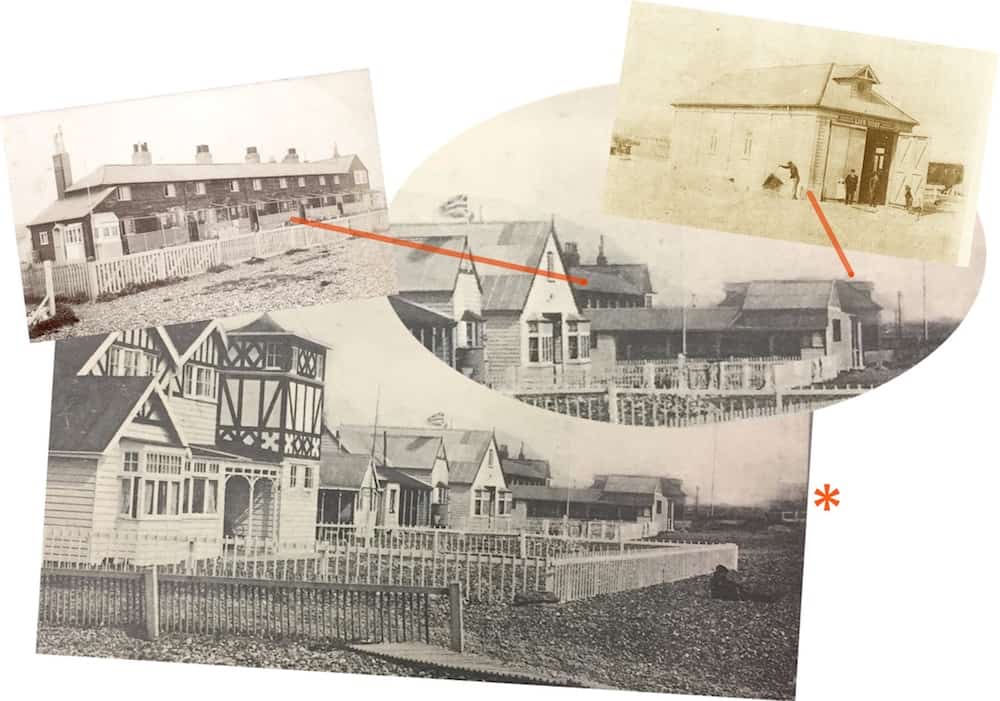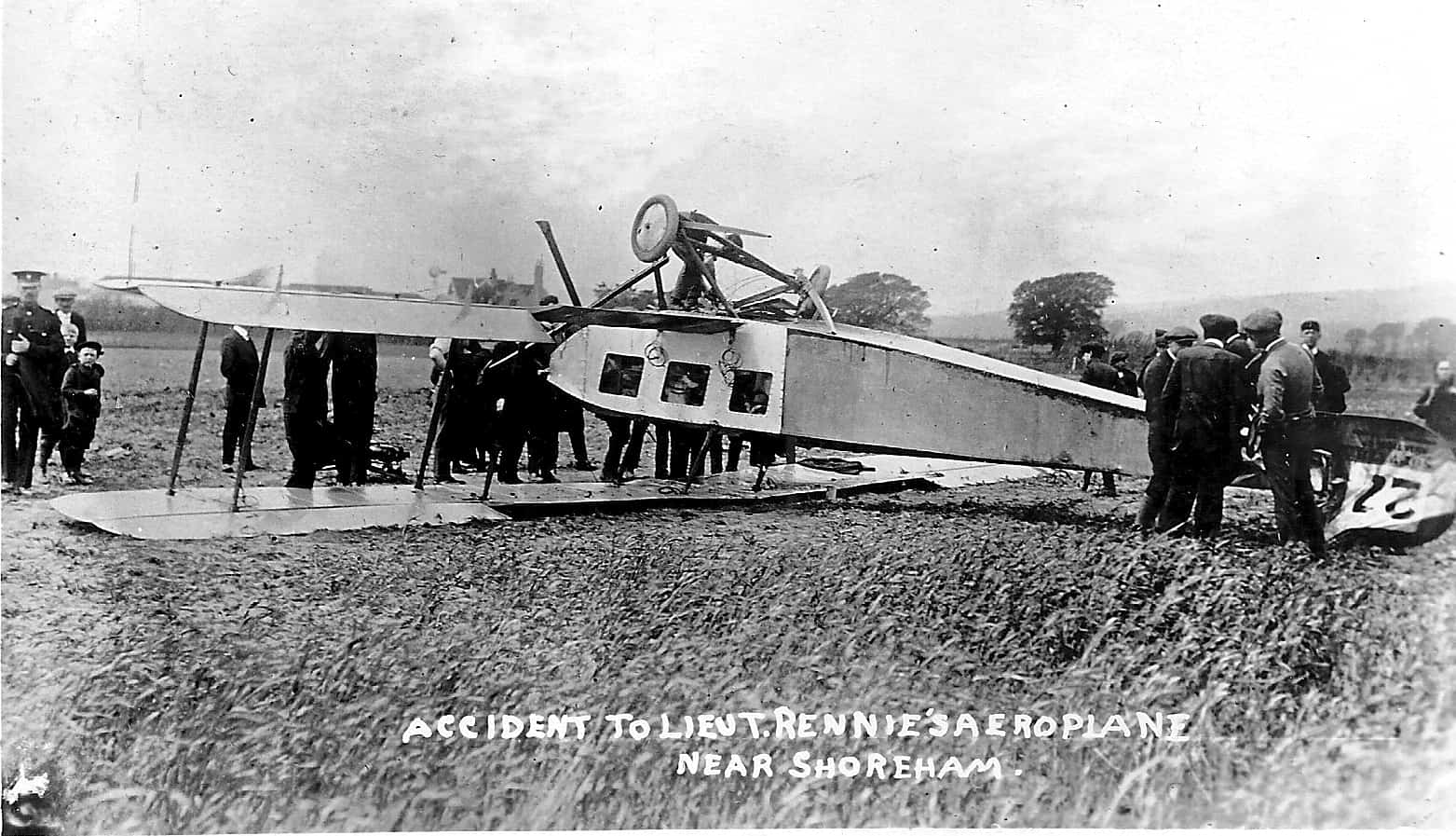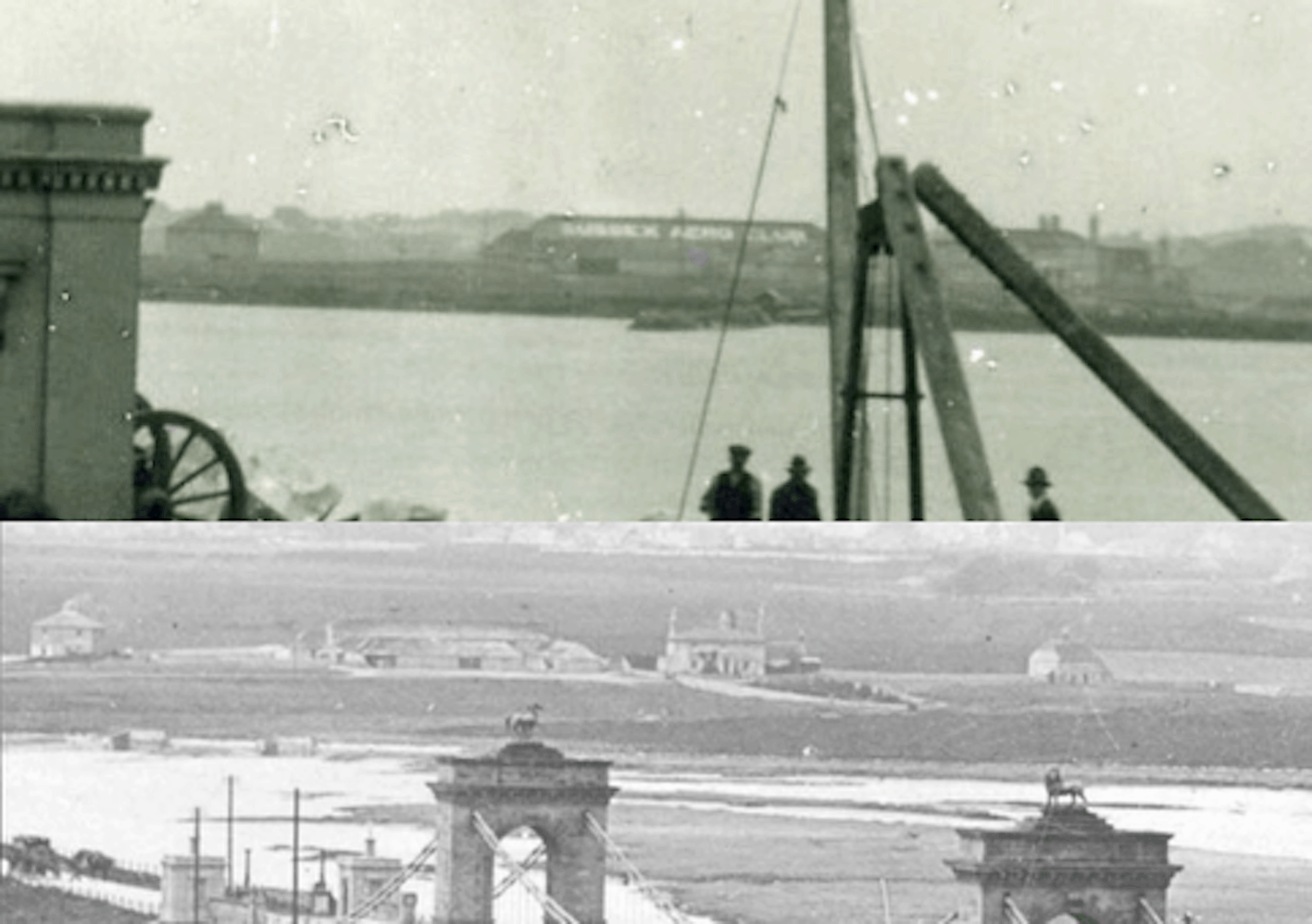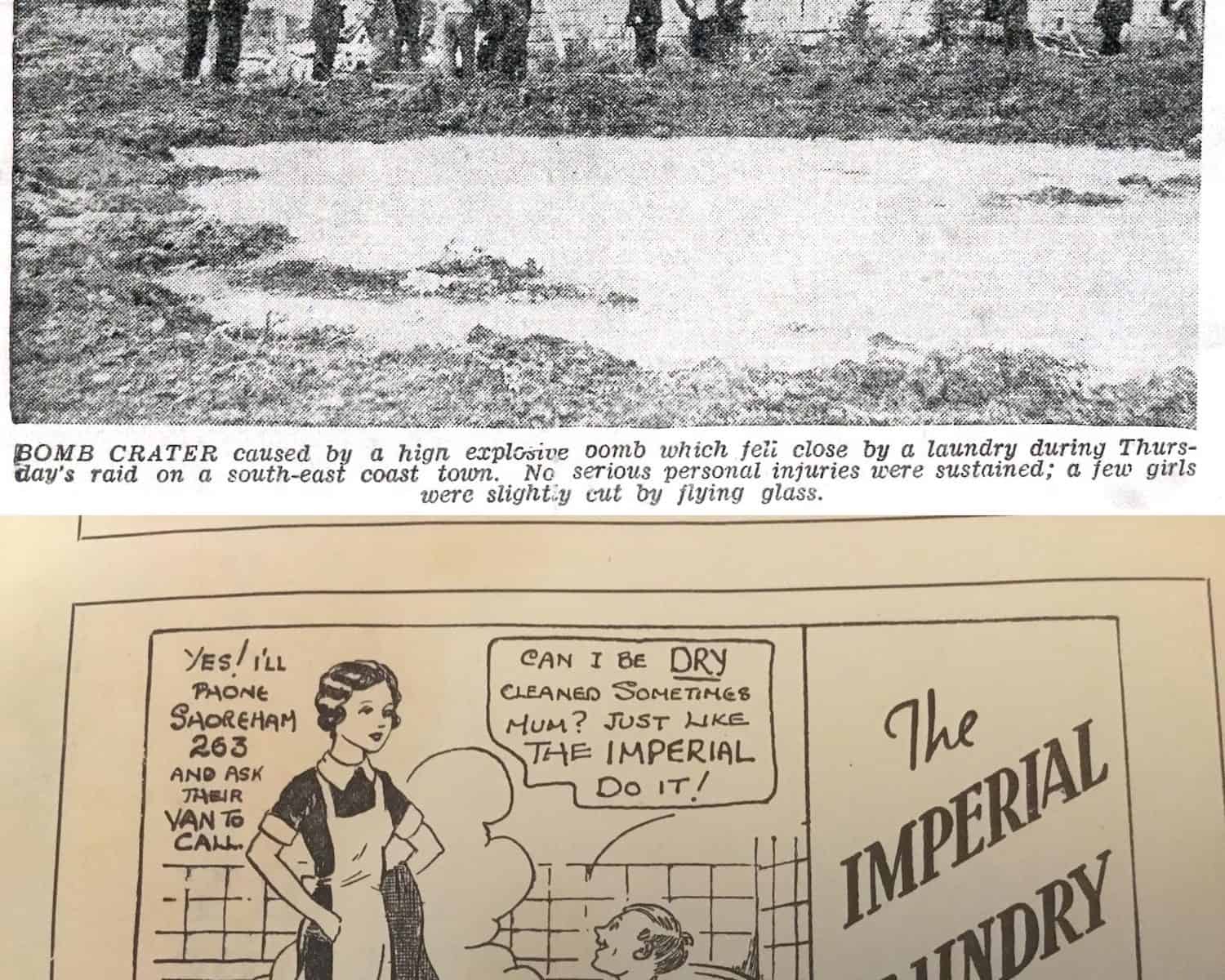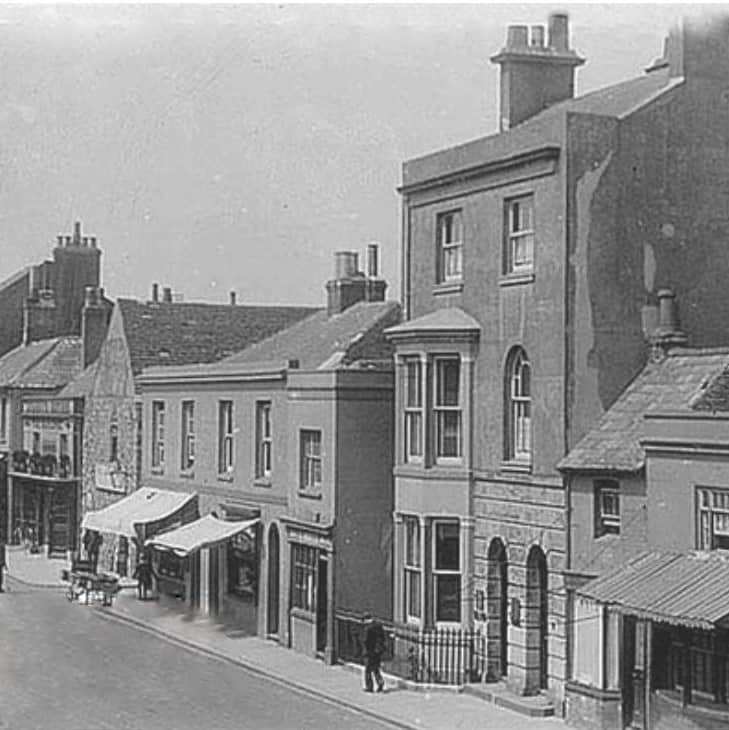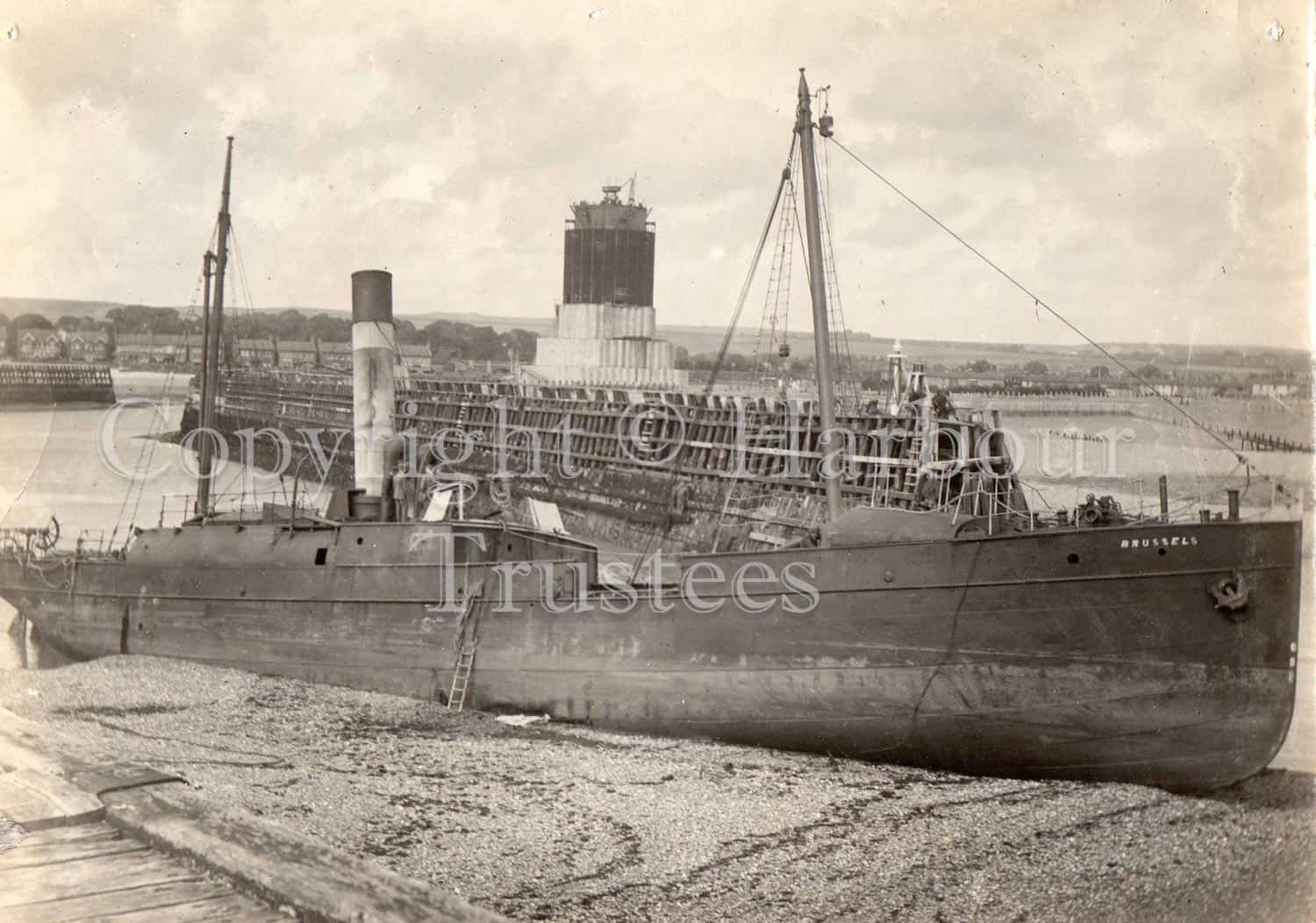From right to left, anti-clockwise:- A newspaper cutting of an otherwise anonymous group and Shoreham location has ‘Standen Family’ written on it. A check through our street directories shows the Standen Brothers at Southdown Nurseries in Mill Lane (where the greenhouses are in the aerial photograph). A 1950’s parade of Morris dancers provides a closer view of the nursery just beyond the lodge to the cemetery and lastly a view of the entrance and shop in the 1930’s.
The Lindupp brothers
The story of Reuben Lindupp is included in ‘More Shoreham Characters’ on this website http://www.shorehambysea.com/more-shoreham-characters/ Susan O’Leary has sent us this link to her fascinating story of Reuben’s brother Harry who left Shoreham to become one of the early pioneers in Australia. Well researched and beautifully illustrated with some stunning photos – well worth a read. Thank you Susan.
http://www.historysnoop.com/henry-harry-lindupp-1827-1905
Lifeboat house on beach
A postcard that shows a fairly usual view west of the beach end of Ferry Road but one that unusually includes the old lifeboat house that stood there next to the coastguard cottages up to the 1920’s. On the extreme right of the card marked by the asterisk more bungalows nearer to the sea are just visible that were built after 1912 and narrows the probable date of the card.
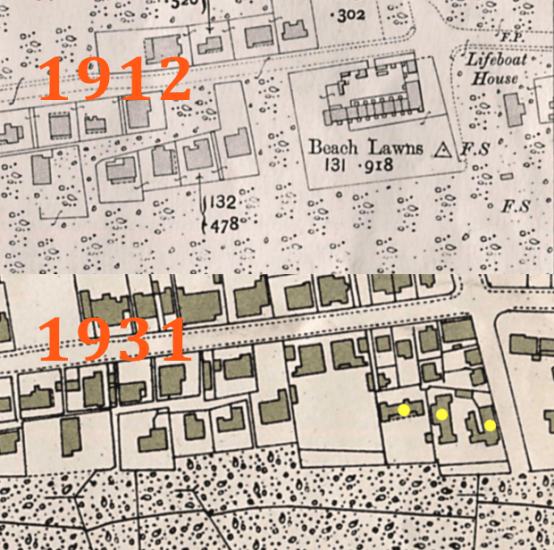 The Ordnance Survey map of 1912 doesn’t show any buildings nearer the sea but obviously there must have been. Another example of even OS maps not being as accurate as you would think.
The Ordnance Survey map of 1912 doesn’t show any buildings nearer the sea but obviously there must have been. Another example of even OS maps not being as accurate as you would think.
(The bungalows in question are marked in yellow)
A flying mishap
The photograph which shows an upside-down aeroplane in a field, has been taken directly from a postcard that was issued at the time of the incident.
But what do we know about the event?
The aeroplane is a Sopwith D1 three-seater general purpose biplane. From the number 27 on the tail, we can tell that this example was operated by the RNAS. With a wingspan of 40 feet, and powered by a 7-cylinder Gnome Lambda rotary engine, this type of aeroplane first flew on 7th February 1913. On 16th June 1914 one of these aeroplanes achieved a new British altitude record of 12,900 feet whilst being flown by Sopwith’s chief test pilot Mr Harry Hawker.
This type of aeroplane carried two observers sitting side by side in the front, with the pilot behind. Three celluloid transparent windows were fitted in each side of the fuselage to give the observers a downward view.
Sussex Aero Club
We’ve often seen views across the old suspension bridge to New Salts Farm and barn on the west side of the river south of the railway line but it wasn’t until discussing one image with Paul (Spinalman) that I realised detail from a 1922 shot of the suspension bridge being demolished (top photo) included lettering on the long barn ‘Sussex Aero Club.’ This was a bit of advertising by the owner of the aero club on the main airfield who rented that barn in Easters Field from the farmer. Shortly after, the barn and the field was rented by the Miles brothers to develop and fly their aircraft for a short while in the early years of their Miles Aircraft company before they moved to the north side of the railway.
Imperial Laundry
An advertisement for the Imperial Laundry kindly donated by Lorraine Luke – it stood near the viaduct and this newspaper photo of a near miss by a German bomb is described in
http://www.shorehambysea.com/shorehams-war/
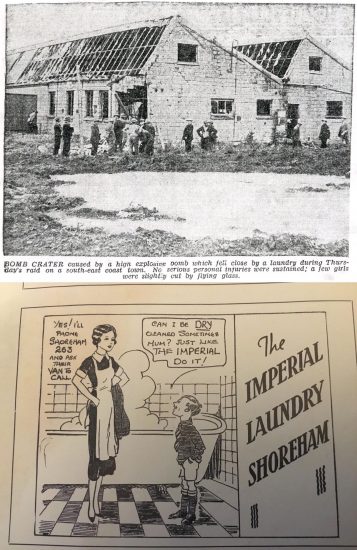
Rare High Street view
You don’t often see this part of the High Street in old photos
(courtesy of Neil De Ville)
Two events recording one photograph
A photo that unusually records both the grounded SS Brussels and the last of the two mystery towers before it was demolished – July 1922
The lifeboat house and lifeboat had been moved to the beach in 1892 after the build up of the bar had prevented the lifeboat from leaving the harbour. They were returned to Kingston after the bar had been cleared and after that photo was taken. Holloways of Shoreham were involved in harbour reclamation work in 1925 which seems likely to have included clearing the bar.
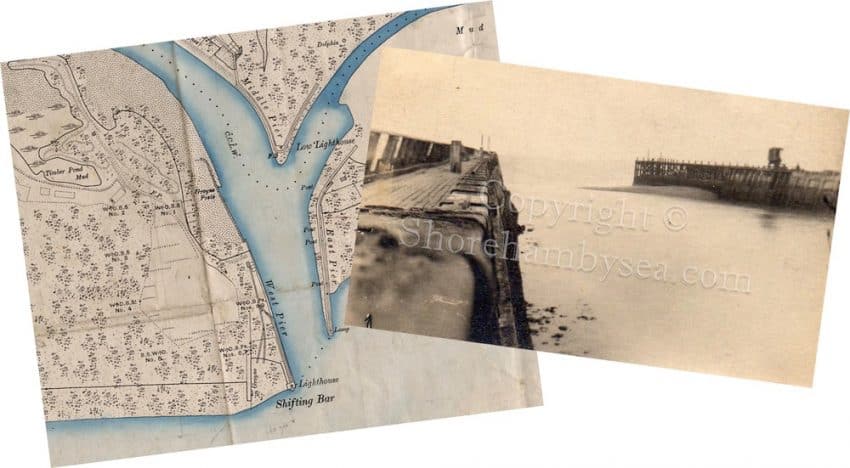
Properties for sale
Houses and buildings were advertised for sale in the papers very much like they are today. One gives details of the numerous store-rooms, cellars and counting room of Daniel Roberts’ huge granary on Mill Green, Ropetackle (1826). Earlier, in 1813, it had been advertised for sale, suitable for possible conversion into a tide-mill. Another advertisement in 1831 revealed that the lean-to still to be seen on the side of the Crown & Anchor was then a hairdressers’ and the sale of the original windmill in Mill Lane (1832) disclosed that it was a wooden smock mill before it was rebuilt in brick and converted to steam power. The Dolphin Chambers buildings on what is now Coronation Green in 1812 included ‘High Cage’ a pivoted boom at the end of which was a lighted brazier to guide vessels to the quayside in poor visibility. Below ground level was an arched cellar 30 feet by 13 only exceeded in size by the vaults in Church Street and the later Custom House/Town Hall.
(Photo shows Dolphin Chambers being demolished in 1938 with the arched cellar just visible behind the man)
Criminal matters
A trawl through newspapers of old brings up some interesting facts. In Shoreham stocks were still being used for lesser offences well into the 19th century; the thief who stole gooseberries from Barruch Blaker’s garden was ordered to receive ‘a good whipping through Shoreham’ administered by the parish constable (1819); a number of months hard labour was the sentence for minor stealing and other misdemeanours; John Hindess received six months hard labour for keeping a brothel (1842) – he was aa Navy pensioner who had fought at Trafalgar but lost his pension because of the offence and in other words was punished twice; John Banks was found guilty of stealing a cow (1823) and after trying to escape across the river near the Pad was re-arrested and later executed; John Baldock of Shoreham also received the death penalty for burglary (1838); Charles Packett was convicted of stealing one of John Glazebrook’s sheep (1838) and sentenced to be transported to one of the harshly run penitentiaries in Australia for ten years – all this at the time when an increasing number of emigrants had been voluntarily sailing from Shoreham for a new life in that country and Canada (1832).



